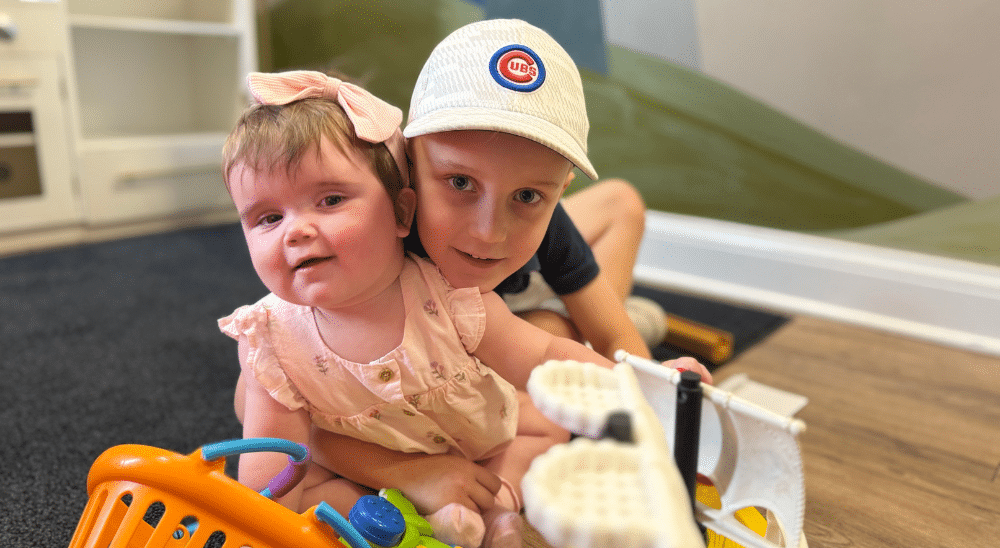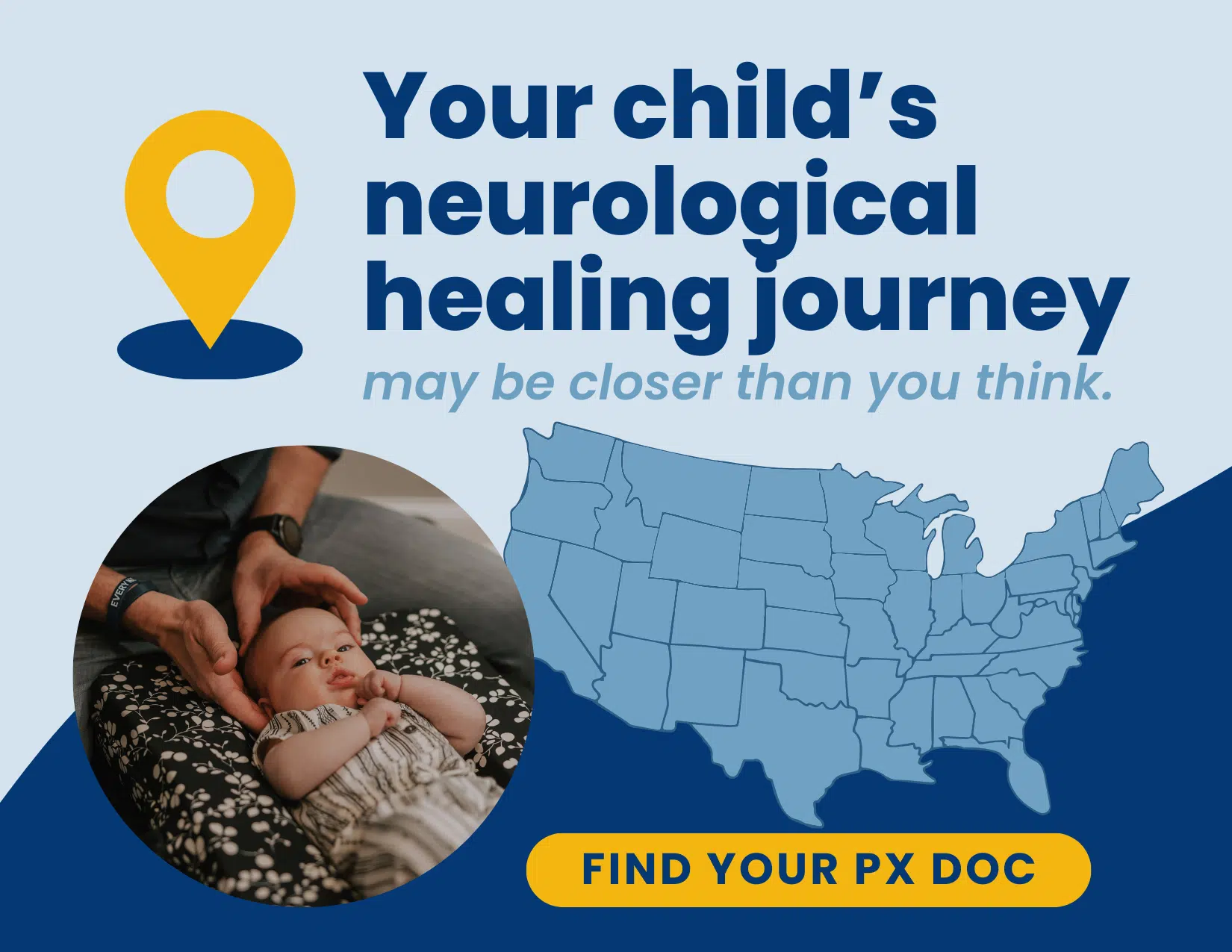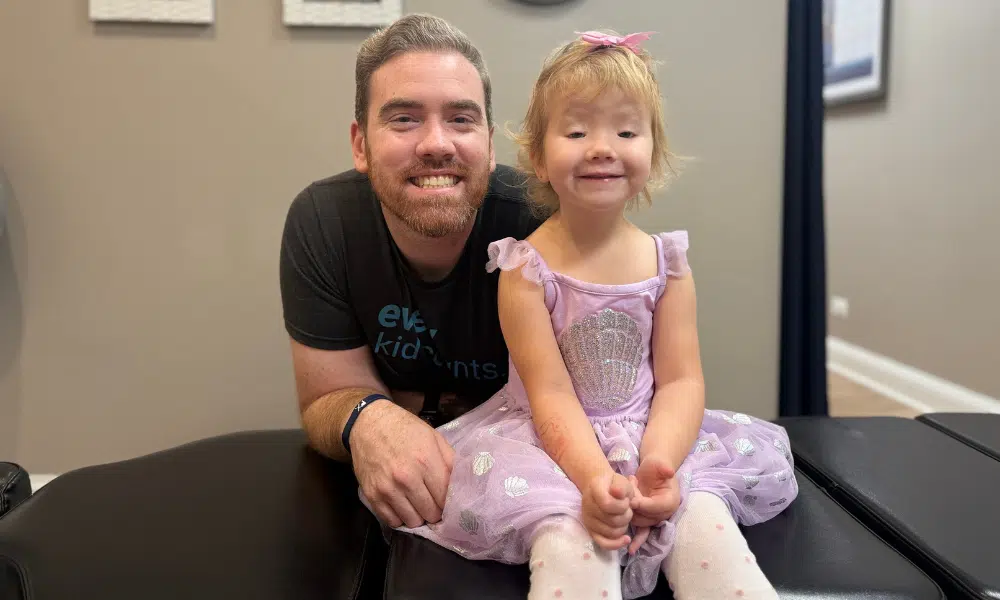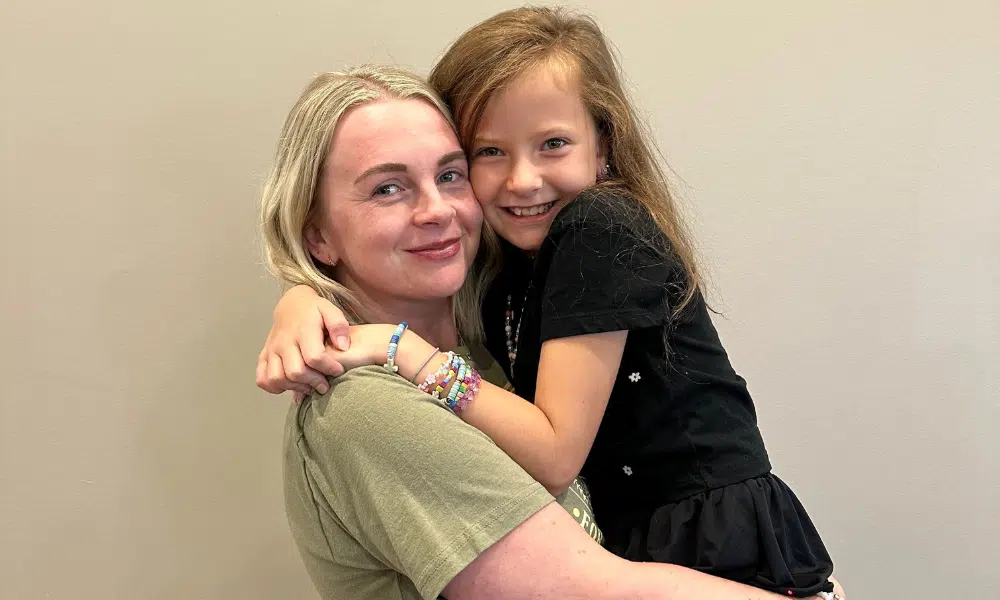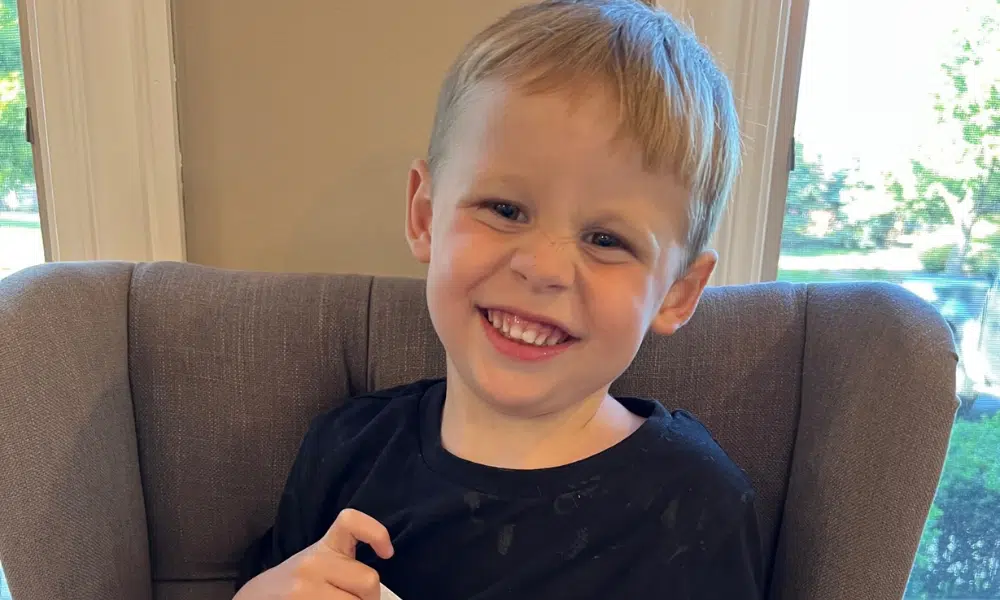Imagine your child’s body is like a bustling city, with messages constantly traveling along highways to keep everything running smoothly. Now imagine that some of those highways—the nerves that make up the Peripheral Nervous System—are blocked, damaged, sending too many signals or too few. Suddenly, traffic backs up: your child struggles with coordination, flinches at light touch, or experiences strange aches and numbness.
For many parents, these signs can be confusing and unsettling—but understanding the PNS can shed light on what’s really happening. The Peripheral Nervous System connects the brain and spinal cord to every muscle, organ, and sensory pathway, playing a crucial role in your child’s development and well-being.
In this article, we’ll explore the PNS, the common issues that can affect it in children, and how PX Docs’ unique approach to pediatric care helps restore healthy nervous system function by identifying and addressing root causes through Neurologically-Focused Chiropractic Care.
What is the Function of the Peripheral Nervous System?
The Peripheral Nervous System (PNS) is essentially a vast network of nerves that branch out from the brain and spinal cord, extending to every corner of the body. These nerves transmit sensory information from the body to the brain and carry motor commands from the brain to the muscles and organs.
The Peripheral Nervous System is divided into two main parts: the Somatic Nervous System and the Autonomic Nervous System. The Somatic Nervous System controls voluntary movements and processes sensory information from the skin, muscles, and joints.
The Autonomic Nervous System regulates involuntary functions that occur automatically without conscious thought. These include processes such as breathing, heart rate, digestion, and blood pressure regulation.
A healthy Peripheral Nervous System (PNS) is essential for a child’s development. It enables exploration, skill acquisition, and appropriate responses to stimuli. Any disruptions or damage to the PNS can significantly affect a child’s quality of life.
Functions of the Peripheral Nervous System
The Peripheral Nervous System serves three main functions that are essential for a child’s health, development, and interaction with the world around them: sensory processing, motor skill development, and autonomic functions.
Sensory Processing
One of the primary roles of the PNS is to transmit sensory information from the body to the brain. This includes sensations like touch, temperature, pain, pressure, and proprioception (the body’s sense of position and movement).
When your child touches a soft blanket, feels the warmth of the sun, or experiences the discomfort of a scraped knee, it’s the Peripheral Nervous System that carries these sensory neurons and messages to the brain for interpretation.
Motor Control
Another key function of the PNS is to carry motor nerves and commands from the brain to the muscles, enabling voluntary movements. When your child reaches for a toy, kicks a ball, or writes their name, the Peripheral Nervous System transmits the necessary signals from the brain to the appropriate muscles to execute these actions.
Proper motor control is essential for a child’s physical development, coordination, and the ability to perform daily tasks. Issues with motor control can manifest as clumsiness, difficulty with fine or gross motor skills, or weakness in certain muscle groups.
Autonomic Functions
The Autonomic Nervous System, a part of the PNS, is responsible for regulating involuntary functions that maintain homeostasis in the body. This includes processes like:
- Breathing
- Heart rate
- Blood pressure regulation
- Digestion
- Temperature control
- Sweating
- Pupil dilation/constriction
The Autonomic Nervous System consists of two branches: the sympathetic and Parasympathetic Nervous Systems. The Sympathetic Nervous System, often referred to as the “fight or flight” response, prepares the body for action in stressful or emergency situations. It increases heart rate, breathing rate, and blood flow to the muscles while diverting resources away from non-essential functions like digestion.
On the other hand, the Parasympathetic Nervous System, known as the “rest, regulate, and digest” response, promotes relaxation and restoration when the body is at rest. It slows down heart rate, reduces blood pressure, and stimulates digestion and other maintenance functions.
A balance between the sympathetic and parasympathetic nervous systems is crucial for maintaining overall health and nervous system regulation. Nervous system dysregulation can lead to a wide range of signs and conditions, such as anxiety, digestive issues, and sleep disturbances.
The “Perfect Storm” of Factors Affecting Peripheral Nervous System Development
The development of a child’s Peripheral Nervous System can be influenced by various factors, which, when combined, create what PX Docs refers to as “The Perfect Storm.” This term describes the cumulative effect of multiple stressors that can disrupt the proper development and function of the nervous system. Some of these factors include:
- Prenatal stress and maternal health: Stress, anxiety, and health issues in pregnancy, along with exposure to toxins and medications, have been found to impact the peripheral nerves and fetal nervous system development.
- Birth trauma and interventions: Complications like prolonged labor, use of forceps or vacuum, and C-sections during childbirth can cause trauma to the nervous system, potentially leading to nervous system dysfunction and other damage.
- Early childhood experiences and environmental factors: Early childhood trauma, abuse, or neglect, along with environmental factors like toxins, antibiotic overuse, poor nutrition, and lack of nurturing, can significantly affect a child’s nervous system development, contributing to “The Perfect Storm.”
Understanding the potential impact of these factors on a child’s Peripheral Nervous System development can help parents and healthcare providers take proactive steps to support healthy nervous system function and address any issues that may arise.
Common Peripheral Nervous System Issues in Children
Peripheral Nervous System conditions can affect children in various ways, leading to a range of signs and challenges. Some common issues include:
- Peripheral neuropathy: a condition where damaged or dysfunctional peripheral nerves lead to signs like numbness, tingling, weakness, and pain. Causes include injuries, infections, metabolic conditions, and genetics.
- Brachial plexus injuries: The brachial plexus is a nerve network controlling shoulder, arm, and hand function. Injuries, often from birth trauma or accidents, can cause weakness, paralysis, and numbness in the limb.
- Erb’s palsy: A type of brachial plexus injury that typically occurs during birth, resulting in weakness or paralysis in the arm. The affected nerves fail to properly transmit signals from the spinal cord to the muscles, impacting movement and function
- Guillain-Barré syndrome: The brachial plexus is a nerve network controlling movement and sensation in the shoulder, arm, and hand. Injuries, often from birth trauma or accidents, can cause weakness, paralysis, and sensory loss in the affected limb.
- Charcot-Marie-Tooth disease: This inherited condition affects the peripheral nerves, leading to muscle weakness and atrophy, sensory loss, and sometimes foot deformities.
- Sensory Processing Disorders: Children with Sensory Processing Disorders have difficulty processing and responding to sensory information from the environment. This can lead to hypersensitivity or hyposensitivity to certain stimuli, which can affect a child’s behavior, learning, and overall functioning.
Recognizing the signs of these and other Peripheral Nervous System issues is essential for early intervention and proper management.
PX Docs’ Approach: Neurologically-Focused Chiropractic Care
At PX Docs, we take a unique approach to addressing Peripheral Nervous System issues in children through Neurologically-Focused Chiropractic Care. Our goal is to identify and address the root causes of nervous system dysfunction, rather than merely caring for side effects.
Central to our approach is the use of INSiGHT Scans, a cutting-edge technology that allows us to detect subluxation and dysautonomia in the nervous system. These scans provide valuable information about a child’s nervous system function, enabling our doctors to create personalized care plans that target specific areas of dysfunction.

By focusing on the root causes and supporting the body’s natural healing abilities, Neurologically-Focused Chiropractic Care offers a drug-free alternative for children with Peripheral Nervous System issues.
Actionable Tips for Parents
As a parent, there are several steps you can take to support your child’s Peripheral Nervous System health and development:
- Be aware of the signs of Peripheral Nervous System issues
- Create a nurturing, low-stress environment for your child
- Prioritize nutrition and hydration, providing a balanced diet rich in vitamins, minerals, and essential fatty acids
- Ensure your child gets enough quality sleep, as sleep is essential for nervous system repair and regeneration.
- Consider Neurologically-Focused Chiropractic Care as a proactive approach to supporting your child’s nervous system health.
Take the Next Step Towards Improved Nervous System Health with PX Docs
The Peripheral Nervous System plays a vital role in your child’s health, development, and overall well-being. By understanding the structure, functions, and common issues affecting the PNS, you can take proactive steps to support your child’s nervous system health and address any concerns that may arise.
If you suspect your child may be experiencing issues with the Peripheral Nervous System or simply want to support their healthy development, we encourage you to visit our PX Docs directory to find a practitioner near you.
We are committed to providing parents with the knowledge, resources, and care they need to help their children thrive. Our Neurologically-Focused Chiropractic approach offers a safe and effective alternative for addressing Peripheral Nervous System issues and promoting optimal health.
Together, we can help your child unlock their full potential and enjoy a happy, healthy life.

